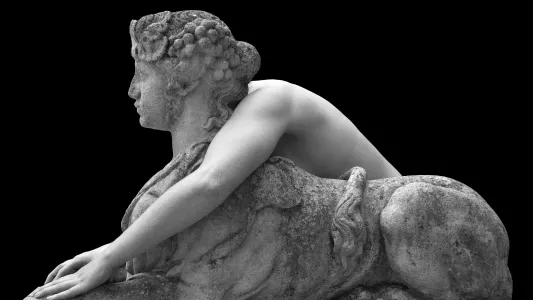Photographer Viviane Sassen (@vivianesassenstudio) was born in Amsterdam and currently lives there. She initially studied fashion at the Utrecht School of the Arts (HKU) in the Netherlands, before switching to photography and fine art.
Her distinctive style, often described as surreal, is her hallmark both in her fine art practice as her fashion, editorial and commercial work. She often conceives her works as ‘collections’, photographic series inspired by particular places, people or themes.
I’m not a conceptual artist, the way I work is very immediate and personal and intuitive.
Viviane lived in Kenya between the ages of 2 and 5, where her father was a doctor at a polio clinic. Her earliest collection, Flamboya (2008), was created during her later travels in East Africa. She says that returning to Africa felt, ‘so much like coming home and at the same time I know I will never ever be part of that society. But that is where my very earliest childhood memories got formed so it is in my blueprint, it is in my spine somehow.’
Other collections have included images taken in Africa, such as Parasomnia (2011), an exploratory meditation on the concept of sleep or feature subjects of African descent as in Pikin Slee (2015), titled after a remote village, which she visited in the rainforest of Suriname, Central America, populated by the descendants of African slaves.
I try to avoid making work that is political. That said, I’m always very aware of the fact that the subject matter itself comes with these political issues. I have a certain responsibility towards the people I photograph because, of course, being a white woman carrying a camera, the camera is already a tool of power.
Viviane is inspired by the Surrealist art movement, which was founded in Paris in 1924 by poet and writer André Breton. The movement was launched with a Surrealist Manifesto that promoted a child’s way of seeing, noting that ‘at an early age children are weaned on the marvellous,’ and advocated dreams as a tool to both understand and create reality.
Viviane’s work often illustrates the unusual or unexpected associations that were key to the creation of Surrealist images in both visual and literary forms.
© Viviane Sassen
I’m always drawn to images which raise questions rather than give answers… Of course, we know that photography is not showing the truth, in my opinion, because there is no truth. It’s an illusion that we can truly get to know someone through a picture. If you look at the picture and you see a face, you scan it and then you know how to read the picture because you see an emotion, or you think you know something about that person. If it’s only a body shape then it becomes more universal in a way, it’s not about that particular person any more, it becomes more open, it’s more about humanity. The body shape in itself also has an expression, has an emotion. A gesture or a pose can also translate a message, a very psychological or emotional message.
In her work, a cropped body combined with further elements reveal what a complex communicator the body can be, dislocated parts conveying sensations and associations more strongly than the whole, freed from a quotidian and rational context.

In the spring of 2020, Viviane Sassen returned to Huis Marseille, the Museum of Photography in Amsterdam, with the exhibition Venus & Mercury. This exhibition originated in Versailles, commissioned by the Palace of Versailles, for the exhibition Visible/Invisible. For six months she was given private, after-hours access to the Palace, in Versailles, France. During this time, she delved into the archives, and used the artifacts and architecture of the palace to create a body of new photographs and collages, inspired by stories about the French court in the seventeenth and eighteenth centuries.







